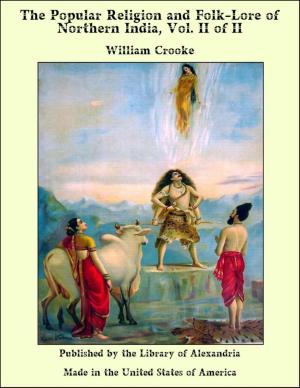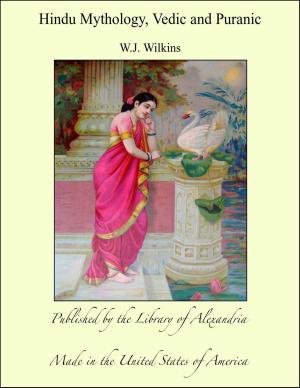The Jew, The Gypsy and El Islam
Nonfiction, Religion & Spirituality, New Age, History, Fiction & Literature| Author: | Sir Richard Francis Burton | ISBN: | 9781465623577 |
| Publisher: | Library of Alexandria | Publication: | March 8, 2015 |
| Imprint: | Language: | English |
| Author: | Sir Richard Francis Burton |
| ISBN: | 9781465623577 |
| Publisher: | Library of Alexandria |
| Publication: | March 8, 2015 |
| Imprint: | |
| Language: | English |
The history of the Jew as well as his physiological aspect are subjects which still remain to be considered and carefully to be worked out from an Aryan point of view. We have of late years seen books in plenty upon points of detail: let us particularize The Physical History of the Jewish Race, by Dr. Josiah Clark Nott (Charleston, 1850); Le Juif, par le Chevalier Geargenot des Monceseaux (Paris: Henri Plon, 1871); and Notices of the Jews and their Country by the Classic Writers of Antiquity: being a Collection of Statements and Opinions translated from the Works of Greek and Latin Heathen Authors previous to a.d. 500, by John Gill (London: Longmans, 1872). But in these, as in other works, we find wanting a practical and personal familiarity with the subject, nor can we be surprised at its absence. It is generally assumed that at the present moment there are six millions of Jews scattered over the face of the earth. Some have exaggerated the total to nine millions and a half; but even the former figure is a greater number, says M. Crémieux, than the nation could boast of at any other period of its history, ancient or modern. Throughout the world also the race increases with such marvellous rapidity as a rule, which admits of few exceptions, that philosophical inquirers are beginning to ask whether this immense fecundity, taken in connexion with the exceptionally healthy and vigorous physique of the race, its ubiquity and its cosmopolitanism, does not point to a remarkable career in times to come. The ethnologist and the student of general history are urgently invited to consider the annals and the physical and intellectual aspects of the children of Israel, perhaps the most interesting subject that can occupy their attention. The Jew, like the Gypsy, stands alone, isolated by character, if not by blessing. Traditionally, or rather according to its own tradition, the oldest family on earth, it is at the same time that which possesses the most abundant vitality. Its indestructible and irrepressible life-power enables this nation without a country to maintain an undying nationality and to nourish a sentiment of caste with a strength and a pertinacity unparalleled in the annals of patriotism. The people that drove the Jews from Judæa, the empires which effaced the kingdoms of Israel and Judah from the map of the world, have utterly perished. The descendants of the conquering Romans are undistinguishable from the rest of mankind. But, eighteen hundred years after the Fall of Jerusalem, the dispersed Jewish people have a distinct existence, are a power in every European capital, conduct the financial operations of nations and governments, and are to be found wherever civilization has extended and commerce has penetrated; in fact, it has made all the world its home. One obstacle to a matured and detailed ethnological study of the Jew is the difficulty of becoming familiar with a people scattered over the two hemispheres. Though the race is one, the two great factors blood and climate have shown it to be anything but immutable, either in physique or in character. Compare, for instance, the two extremes—the Tatar-faced Karaïte of the Crimea with the Semitic features of Morocco, the blond lovelocks of Aden and the fiery ringlets of Germany with the greasy, black hair of Houndsditch. And as bodily form differs greatly, there is perhaps a still greater distinction in mental characteristics: we can hardly believe the peaceful and industrious Dutch Jew a brother of the fanatic and ferocious Hebrew who haunts the rugged Highlands of Safed in the Holy Land. Yet though these differences constitute almost a series of sub-races, there is one essentially great quality which cements and combines the whole house of Israel.
The history of the Jew as well as his physiological aspect are subjects which still remain to be considered and carefully to be worked out from an Aryan point of view. We have of late years seen books in plenty upon points of detail: let us particularize The Physical History of the Jewish Race, by Dr. Josiah Clark Nott (Charleston, 1850); Le Juif, par le Chevalier Geargenot des Monceseaux (Paris: Henri Plon, 1871); and Notices of the Jews and their Country by the Classic Writers of Antiquity: being a Collection of Statements and Opinions translated from the Works of Greek and Latin Heathen Authors previous to a.d. 500, by John Gill (London: Longmans, 1872). But in these, as in other works, we find wanting a practical and personal familiarity with the subject, nor can we be surprised at its absence. It is generally assumed that at the present moment there are six millions of Jews scattered over the face of the earth. Some have exaggerated the total to nine millions and a half; but even the former figure is a greater number, says M. Crémieux, than the nation could boast of at any other period of its history, ancient or modern. Throughout the world also the race increases with such marvellous rapidity as a rule, which admits of few exceptions, that philosophical inquirers are beginning to ask whether this immense fecundity, taken in connexion with the exceptionally healthy and vigorous physique of the race, its ubiquity and its cosmopolitanism, does not point to a remarkable career in times to come. The ethnologist and the student of general history are urgently invited to consider the annals and the physical and intellectual aspects of the children of Israel, perhaps the most interesting subject that can occupy their attention. The Jew, like the Gypsy, stands alone, isolated by character, if not by blessing. Traditionally, or rather according to its own tradition, the oldest family on earth, it is at the same time that which possesses the most abundant vitality. Its indestructible and irrepressible life-power enables this nation without a country to maintain an undying nationality and to nourish a sentiment of caste with a strength and a pertinacity unparalleled in the annals of patriotism. The people that drove the Jews from Judæa, the empires which effaced the kingdoms of Israel and Judah from the map of the world, have utterly perished. The descendants of the conquering Romans are undistinguishable from the rest of mankind. But, eighteen hundred years after the Fall of Jerusalem, the dispersed Jewish people have a distinct existence, are a power in every European capital, conduct the financial operations of nations and governments, and are to be found wherever civilization has extended and commerce has penetrated; in fact, it has made all the world its home. One obstacle to a matured and detailed ethnological study of the Jew is the difficulty of becoming familiar with a people scattered over the two hemispheres. Though the race is one, the two great factors blood and climate have shown it to be anything but immutable, either in physique or in character. Compare, for instance, the two extremes—the Tatar-faced Karaïte of the Crimea with the Semitic features of Morocco, the blond lovelocks of Aden and the fiery ringlets of Germany with the greasy, black hair of Houndsditch. And as bodily form differs greatly, there is perhaps a still greater distinction in mental characteristics: we can hardly believe the peaceful and industrious Dutch Jew a brother of the fanatic and ferocious Hebrew who haunts the rugged Highlands of Safed in the Holy Land. Yet though these differences constitute almost a series of sub-races, there is one essentially great quality which cements and combines the whole house of Israel.















